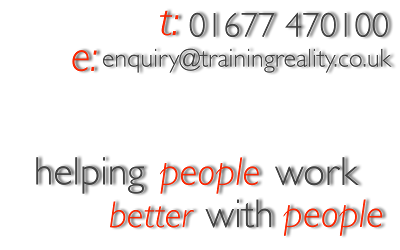Please press (at least!) one of these.
It costs you nothing, and (possibly) helps us spread the word!
Leadership and support
Monday, 2 November 2009
The recent news that Alan Johnson has sacked the chairman of the Advisory Council on the Misuse of Drugs was covered on tonight’s PM programme. There was one particular part of the story that caught my ear - that Professor Nutt had been sacked because he had "acted in a way that undermined the government rather than supporting its work".
This interests me, because there are often times when the views of an “employee” runs counter to the view of the “employer” - being very loose with the definitions of the words employer and employee there. I’ve written before about the potential positive benefits of having someone on a team who says no (see here), but this got me thinking about the appropriate boundaries, if any, of dissent.
At the very end, I’ll return to this political example, but, for now, I want to offer a view on the rights and wrongs of dissent in teams and organisations.
Principles of dissent
To what extent is it the right thing to do to be openly out of line with your team and manager and to express that outside the team, when a decision has been taken that you fundamentally disagree with?
The principles I would offer as operating guidelines would be:
1) When thinking about being open in your dissent, what is your (genuine) reason for doing so? A few that commonly arise if we’re honest with ourselves are:
- a) I want everybody to know I disagree, so that when/if it goes wrong, they know I was right
- b) I want to show I don’t follow like a sheep - I’m independent
- c) I want to prove I’m better than the others
- d) I want to undermine my boss because I don’t like/support him/her
and so on. By going public with these types of dissent, these things might work - but I don’t believe that the effect is sustainable...people will suss you out sooner or later (simply dependent on how skillfully you apply these techniques).
If, however, on analysing your reasons for going public, they are in (what you believe to be) the genuine broader interest (whistle-blowers when abuse is occurring is an example that springs to mind), then I would urge people to go for it...as long as you have really been honest in your self-evaluation.
Do It For The Right Reason
2) The second area is about the potential impact of your dissent. Even if you are completely confident that you’re doing it for the right reason, it is vital to look at the widest possible implications of your action.
The real challenge in this areas is that the bigger the issue at stake, the more likely and tempting is is to rush in and “just do it”. There are some things in life that need these immediate responses, but, more often, we can benefit hugely from taking the time to understand the impact on the broader environment.
I’m not a fan of the over-used (and often meaninglessly used) expression “stakeholder”, but you need to understand the impact on all of the stakeholders of your actions, both in the short term and long term, and that includes you.
It might well be that, upon this analysis, you’re feeling less comfortable about taking the action - and that’s a good thing as it means you’ve really taken the potential impacts to heart. But don’t just stop there - go back to Principle 1 and decide (a) whether is is still worth going ahead, and (b) what are the negative consequences that you want to mitigate.
Take Responsibility For The Impact
3) The third area is about how you do it. You’ve already worked out that you’re doing it for the right reason, and that you’ve understood the broadest possible impacts of going ahead and expressing your dissent. You now need to decide how to do it.
Professor David Nutt went public with his dissent. Others (and we obviously wouldn’t know about them, by definition) will keep their dissent within the team, or even only in direct contact with their manager or leader.
In addition to the “to whom” question about your planned dissent, there are the questions of timing, and of where you choose to do it. These will all have an effect on the results you get, the other impacts you cause, and may also add some insight into why you are doing it in the first place (I want to do it publicly in front of as many people as possible... why?!). This process with help to further refine your dissent so that, by this stage, you know you’re doing the right thing the right way if you decide to go ahead.
Plan Your Approach To Get The Right Results
--
These three principles seem to me to provide a good starting point to help with the often tough decision making process when you are in a position in which you feel the need to stand against your team or your manager/leader. In a later blog, I’m going to look at the manager or leader in this context, and the appropriate ways in which they can manage this type of conflict.
--
Going back to the specific political example that started this, I think there is an additional problem with this example. That is that Mr Johnson should not regard himself as the “employer” of the Professor who should be supported. We, the public, are the employers of both, and therefore we have the right to know about dissent between our employees. However, as usually happens after long periods in power, politicians and political parties tend to forget who the boss really is.
Please press (at least!) one of these.
It costs you nothing, and (possibly) helps us spread the word!



